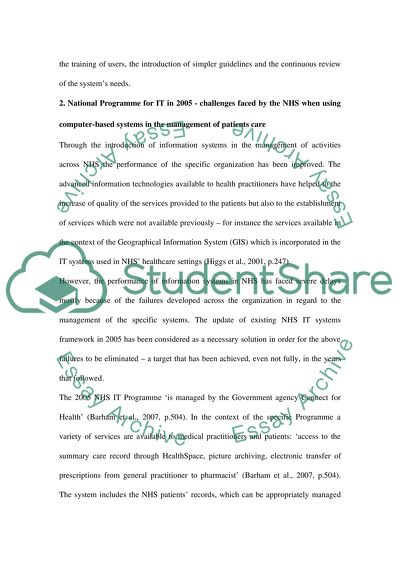Cite this document
(Systems in the Management of Patients Care Assignment, n.d.)
Systems in the Management of Patients Care Assignment. https://studentshare.org/health-sciences-medicine/1574256-1critically-examine-the-challenges-facing-the-nhs-in-employing-the-use-of-computer-based-systems-in-the-management-of-patients-care-since-the-introduction-of-the-national-programme-for-it-in-2005
Systems in the Management of Patients Care Assignment. https://studentshare.org/health-sciences-medicine/1574256-1critically-examine-the-challenges-facing-the-nhs-in-employing-the-use-of-computer-based-systems-in-the-management-of-patients-care-since-the-introduction-of-the-national-programme-for-it-in-2005
(Systems in the Management of Patients Care Assignment)
Systems in the Management of Patients Care Assignment. https://studentshare.org/health-sciences-medicine/1574256-1critically-examine-the-challenges-facing-the-nhs-in-employing-the-use-of-computer-based-systems-in-the-management-of-patients-care-since-the-introduction-of-the-national-programme-for-it-in-2005.
Systems in the Management of Patients Care Assignment. https://studentshare.org/health-sciences-medicine/1574256-1critically-examine-the-challenges-facing-the-nhs-in-employing-the-use-of-computer-based-systems-in-the-management-of-patients-care-since-the-introduction-of-the-national-programme-for-it-in-2005.
“Systems in the Management of Patients Care Assignment”. https://studentshare.org/health-sciences-medicine/1574256-1critically-examine-the-challenges-facing-the-nhs-in-employing-the-use-of-computer-based-systems-in-the-management-of-patients-care-since-the-introduction-of-the-national-programme-for-it-in-2005.


